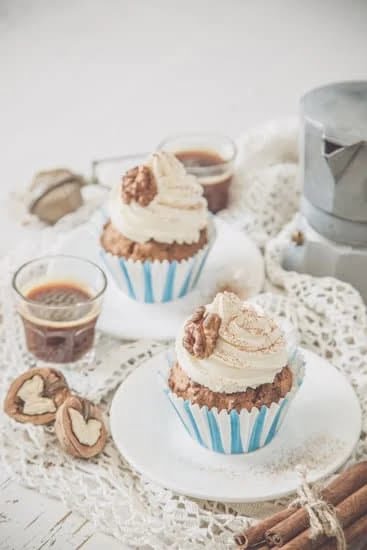Are you looking to learn how to decorate a dummy cake with fondant? In this article, we will guide you through the step-by-step process of creating beautiful fondant decorations for a dummy cake. First, we will introduce you to what dummy cakes are and the role fondant plays in cake decoration.
Dummy cakes, also known as display or fake cakes, are non-edible styrofoam or plastic cakes often used for display purposes at events or in bakery showcases. Fondant, on the other hand, is a versatile sugar paste that can be rolled out and draped over cakes to create a smooth finish and intricate designs.
Next, we will discuss important tips for choosing the right size and shape of a dummy cake as well as the best type of fondant to use for decorating. We will provide recommendations for selecting the appropriate materials to achieve the desired results.
Following that, we will delve into the steps involved in preparing the dummy cake for fondant application and detail the tools needed for this process. Additionally, we will provide detailed instructions on rolling out and applying the fondant smoothly onto the surface of the dummy cake.
We hope this introduction has piqued your interest in learning more about how to decorate a dummy cake with fondant. Let’s dive into further details about each step involved in this creative process.
Choosing the Right Dummy Cake and Fondant
When it comes to decorating a dummy cake with fondant, choosing the right size, shape, and type of fondant is crucial for achieving a professional-looking result. Whether you are creating a display piece for a bakery or practicing your cake decorating skills, it’s important to make informed decisions about your materials. Here are some tips for selecting the appropriate dummy cake and fondant for your project.
Selecting the Appropriate Size and Shape of a Dummy Cake
Size Matters
When choosing a dummy cake, consider the size that will best showcase your design. Whether you’re creating a wedding cake display or a themed sculpted cake, pick a size that allows enough space for your intended decorations without overwhelming the overall look.
Consider Shapes
Different occasions call for different cake shapes, be it round, square, or even more unique silhouettes like hearts or hexagons. Think about the event or theme of your decoration project to decide on the ideal shape for your dummy cake.
Recommendations for the Best Type of Fondant to Use for Decorating
Quality Matters
Selecting high-quality fondant is essential for smooth application and lasting results. Look for brands known for their ease of use and good taste.
Color Versatility
If color is important in your design, choose a brand that offers a wide range of pre-colored fondants or is known for its versatility in taking color well. This will give you more freedom when creating intricate details on your dummy cake.
By carefully considering these factors, you can ensure that you have chosen the right dummy cake and fondant before moving on to preparing and decorating your masterpiece.
Preparing the Dummy Cake for Fondant
Steps for Prepping the Dummy Cake Surface
Before applying fondant to a dummy cake, it is essential to prepare the surface to ensure a smooth and flawless finish. Start by cleaning the dummy cake with a damp cloth to remove any dirt or dust. Then, use a non-stick spray or a thin layer of shortening to coat the surface of the cake. This will help the fondant adhere properly and prevent it from sticking.
Next, make sure that any imperfections on the dummy cake are smoothed out. Use sandpaper or a fine-grit file to even out any rough edges or bumps on the surface. Once the surface is smooth and free of imperfections, wipe it down again with a clean cloth to remove any residue from sanding.
Tools and Materials Needed
In addition to prepping the dummy cake surface, you will need a few tools and materials before applying fondant. A rolling pin is essential for rolling out the fondant to the correct thickness. It’s also helpful to have a fondant smoother or paddle, which will help you achieve a seamless finish when applying the fondant to the cake.
You may also want to have cornstarch or powdered sugar on hand for dusting your work surface and preventing the fondant from sticking. Additionally, having a sharp knife or pair of scissors for trimming excess fondant will be useful for achieving clean edges on your decorated dummy cake.
Protecting Edges and Corners
To ensure that your fondant decorations look polished and professional, take extra care in protecting sharp edges and corners on your dummy cake. Applying a thin layer of softened buttercream or piping gel along these areas before adding fondant can help prevent tearing or cracking during application. Be sure to smooth out any excess buttercream before adding the fondant over it.
By following these steps and guidelines for preparing your dummy cake for fondant decoration, you’ll be well-equipped to create stunning designs with ease.
Rolling Out and Applying the Fondant
When it comes to decorating a dummy cake with fondant, one of the most important steps is rolling out and applying the fondant. This process requires precision and attention to detail in order to achieve a flawless look. Here are some essential tips and techniques for this critical stage of decorating your dummy cake:
1. Preparing the work surface: Before you begin rolling out the fondant, make sure your work surface is clean and smooth. You can use a non-stick mat or silicone rolling pin to prevent the fondant from sticking.
2. Rolling out the fondant: Sprinkle a small amount of cornstarch or powdered sugar on your work surface to prevent sticking. Then, using a rolling pin, roll out the fondant into a thin, even layer that is slightly larger than the size of your dummy cake.
3. Applying the fondant: Gently lift the rolled-out fondant using a rolling pin or by draping it over your hands, then carefully place it over the dummy cake. Smooth out any air bubbles or wrinkles using a fondant smoother or your hands, working from the top down to avoid trapping air.
It’s important to take your time during this step and handle the fondant with care to avoid tears or imperfections in the finish. Remember that practice makes perfect, so don’t be discouraged if you don’t get it right on your first try. With patience and dedication, you can master the art of rolling out and applying fondant to create stunning decorations for your dummy cakes.
Whether you’re creating a simple design or an elaborate masterpiece, mastering how to decorate a dummy cake with fondant will allow you to elevate any celebration with beautiful and professional-looking desserts.
Creating Fondant Decorations
Fondant decorations are a beautiful and versatile way to add intricate details to any cake, including dummy cakes. Whether you’re looking to create delicate flowers, elegant bows, or other imaginative designs, fondant offers endless possibilities for decorating your dummy cake. Here’s a step-by-step guide on how to create fondant decorations for your dummy cake using this versatile and pliable material.
1. Choosing Your Fondant: Selecting the right type of fondant is crucial for creating stunning decorations. Opt for a high-quality fondant that is easy to work with and provides a smooth finish. Many professional bakers recommend using marshmallow fondant or satin ice fondant for their pliability and ability to hold intricate details.
2. Making Fondant Decorations: Start by kneading the fondant until it is soft and pliable. Then, roll it out to the desired thickness on a clean surface dusted with powdered sugar or cornstarch to prevent sticking. For flowers, use flower cutters or hand mold petals from the fondant. Bows can be created by cutting strips of fondant and looping them together in the desired shape.
3. Adding Intricate Details: When making intricate designs such as lace patterns or delicate shapes, use small specialized tools such as fondant veining tools, embossing mats, or silicone molds to give your decorations a professional finish.
Remember that practice makes perfect when working with fondant decorations. Be patient and keep experimenting with different techniques and designs before applying them to your dummy cake.
By following these steps in creating stunning laments will allow you master how to decorate a dummy cake with fondant while unleashing your creative culinary skills.
Adding Color and Texture to the Fondant
When it comes to decorating a dummy cake with fondant, adding color and texture to the fondant is an important step in creating a visually stunning and realistic cake display. There are several ways to achieve this, and it allows for endless creative possibilities. Whether you’re aiming for a bold and vibrant look or a more subtle and elegant design, mastering the art of coloring and texturing fondant can take your dummy cake to the next level.
To begin, adding color to fondant can be done using gel or powdered food coloring. Gel coloring is preferred as it doesn’t change the composition of the fondant and is available in a wide range of shades. Start by kneading a small amount of gel coloring into the fondant until you achieve your desired color.
Keep in mind that colors intensify over time, so start with a small amount and add more as needed. For lighter shades, use less coloring; for deeper hues, knead in more color until fully incorporated.
In terms of adding texture to fondant, there are various methods that can be used for different effects. One technique involves using textured mats or rollers to imprint patterns onto the fondant before applying it to the dummy cake. This creates a unique backdrop for any additional decorations and can mimic the look of fabric, wood grain, or other interesting textures.
Another method is hand-painting directly onto the fondant using edible paints or luster dust. This allows for intricate designs and fine detail work that can truly bring your dummy cake to life.
Adding color and texture to fondant is an essential part of creating visually appealing cakes that stand out from the rest. It allows decorators to showcase their creativity and skill while achieving professional-looking results. By experimenting with different colors and textures, decorators can elevate their designs and bring their creative vision to life on a dummy cake.
| Coloring Fondant | Texturing Fondant |
|---|---|
| Use gel or powdered food coloring | Use textured mats or rollers |
| Knead color into fondant | Create unique patterns on fondant |
| Add more color for deeper shades | Hand-paint onto the fondant surface |
Troubleshooting and Fixing Mistakes
Working with fondant can be a rewarding but sometimes challenging experience. There are several common issues that may arise when decorating a dummy cake with fondant, but they can be easily addressed with the right techniques.
One of the most frequent problems is tears in the fondant, which can occur when applying or smoothing it onto the cake. To fix tears in the fondant, gently press the torn area together using your fingers or a small tool, then smooth over it to blend in with the rest of the surface.
Another potential issue is bulges or air bubbles forming under the fondant after it has been applied. If this happens, use a small pin to prick the bulge or bubble, then gently press out any trapped air before smoothing over the area. It’s important to work carefully and patiently when encountering these problems to ensure a flawless finish on your dummy cake.
In some cases, there may be imperfections in the fondant decorations themselves, such as cracks or uneven edges. These can be fixed by gently reshaping or blending in those areas with a little extra fondant. With practice and attention to detail, troubleshooting these mistakes will become second nature as you perfect your skills in decorating dummy cakes with fondant.
| Troubleshooting Tips | Fixing Techniques |
|---|---|
| Tears in Fondant | Gently press torn area together, then smooth over |
| Bulges/Air Bubbles | Prick with pin, press out air, and then smooth over |
| Imperfections in Decorations | Gently reshape or blend in with extra fondant |
Displaying and Storing Decorated Dummy Cakes
After putting in the effort to decorate a dummy cake with fondant, it’s important to consider how to display and store the finished product. One of the benefits of using a dummy cake is that it can be kept for long-term display, making it an ideal option for special occasions or as a decorative centerpiece.
When choosing a location for the cake, consider areas away from direct sunlight and high humidity to preserve the integrity of the fondant decorations.
To showcase the decorated dummy cake, consider using a sturdy cake stand or display base that complements the design of the cake. There are various options available, including acrylic stands, wooden bases, or even decorative platters. Choose a display option that not only supports the weight of the cake but also enhances its overall appearance.
When it comes to storing decorated dummy cakes, it’s important to keep them in a cool and dry environment. Avoid exposing them to extreme temperatures as this can cause damage to both the dummy cake and fondant decorations. Additionally, if the cake has delicate details such as flowers or intricate designs, consider covering it with a clear plastic dome or glass cloche to prevent dust accumulation while on display.
By following these tips for displaying and storing decorated dummy cakes, you can ensure that your fondant creations remain intact and visually appealing for long-term enjoyment. Whether used as props for photo shoots, displays at events, or home decor accents, properly cared-for dummy cakes can continue to make an impact long after they have been decorated.
Conclusion and Inspiration
In conclusion, decorating a dummy cake with fondant can be a fun and rewarding process for both amateur and professional bakers alike. From choosing the right dummy cake and fondant to creating intricate decorations and troubleshooting any issues, this article has provided a comprehensive guide on how to achieve stunning results. With the step-by-step instructions and tips provided, anyone can successfully create a beautifully decorated dummy cake that can be displayed for years to come.
As you embark on your own journey of decorating dummy cakes with fondant, remember that practice makes perfect. Don’t be discouraged by any mishaps or imperfections along the way. With patience and perseverance, you will develop the skills and confidence needed to produce breathtaking fondant decorations that will impress everyone who sees them.
Lastly, let this guide serve as inspiration for your future fondant projects. Take the techniques you’ve learned here and use them as a foundation to explore your creativity. Whether it’s crafting unique designs or experimenting with different colors and textures, the possibilities are endless when it comes to decorating dummy cakes with fondant. So go ahead, unleash your imagination, and create stunning edible works of art that will leave a lasting impression on all who behold them.
Frequently Asked Questions
How Do You Stick Fondant to a Dummy Cake?
To stick fondant to a dummy cake, you can use a thin layer of piping gel or simple syrup on the surface of the dummy cake. This will help the fondant adhere to the dummy cake securely without slipping or sliding.
How Far in Advance Can You Cover a Dummy Cake With Fondant?
You can cover a dummy cake with fondant as far in advance as needed since dummy cakes are not intended for consumption and do not spoil. Fondant-covered dummy cakes can be prepared weeks or even months ahead of time, allowing for ample preparation for special events or displays.
How Do You Preserve a Fondant Dummy Cake?
To preserve a fondant-covered dummy cake, you should store it in a cool, dry place away from direct sunlight. It’s important to avoid excessive humidity and moisture, as this can cause the fondant to become sticky and lose its shape.
Additionally, keeping the dummy cake in an air-tight container or wrapped in plastic wrap can help protect it from dust and damage.

Welcome to our cake decorating blog! My name is Destiny Flores, and I am the proud owner of a cake decorating business named Cake Karma. Our mission is to provide delicious, beautiful cakes for all occasions. We specialize in creating custom cakes that are tailored specifically to each customer’s individual needs and tastes.





